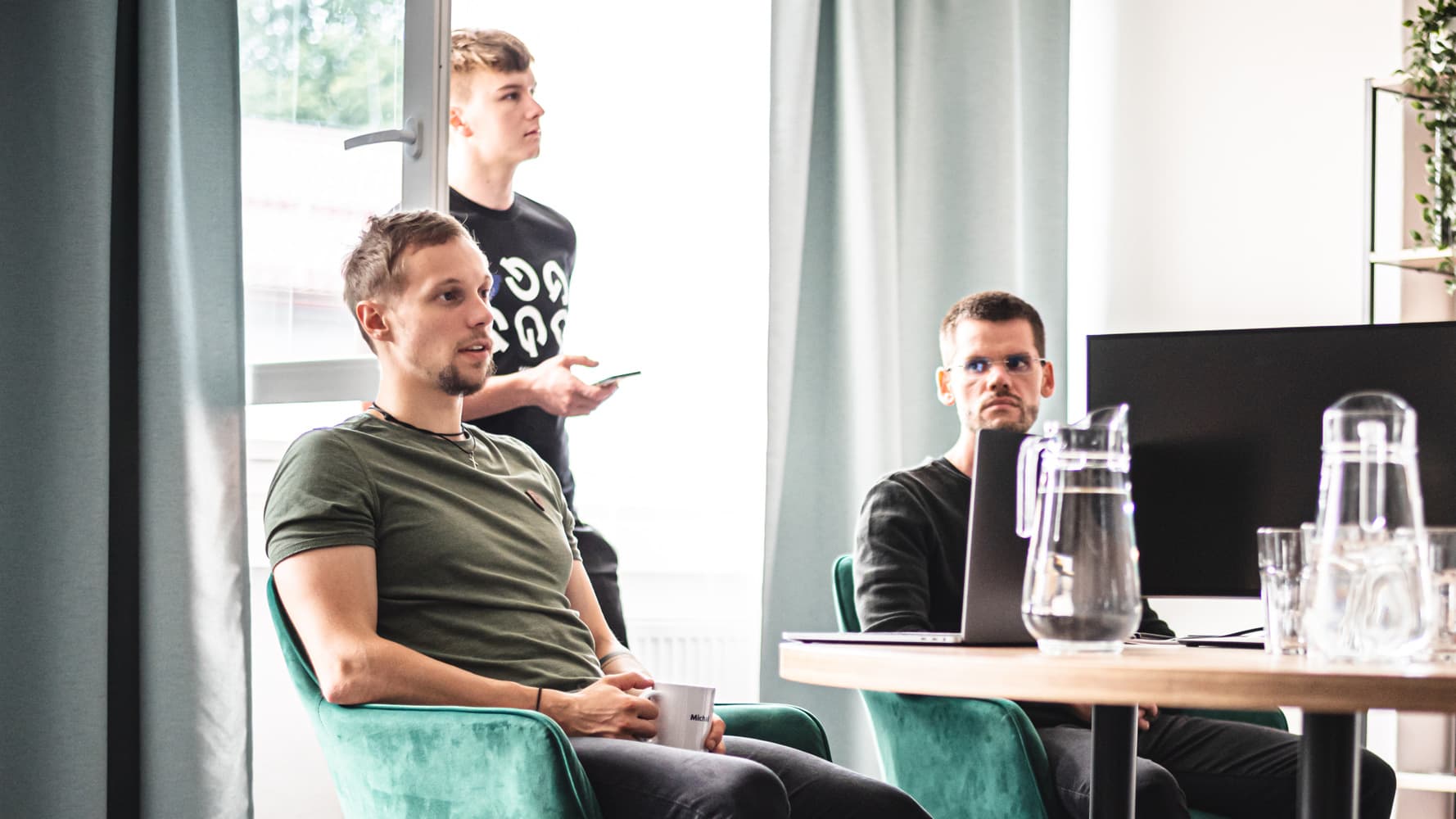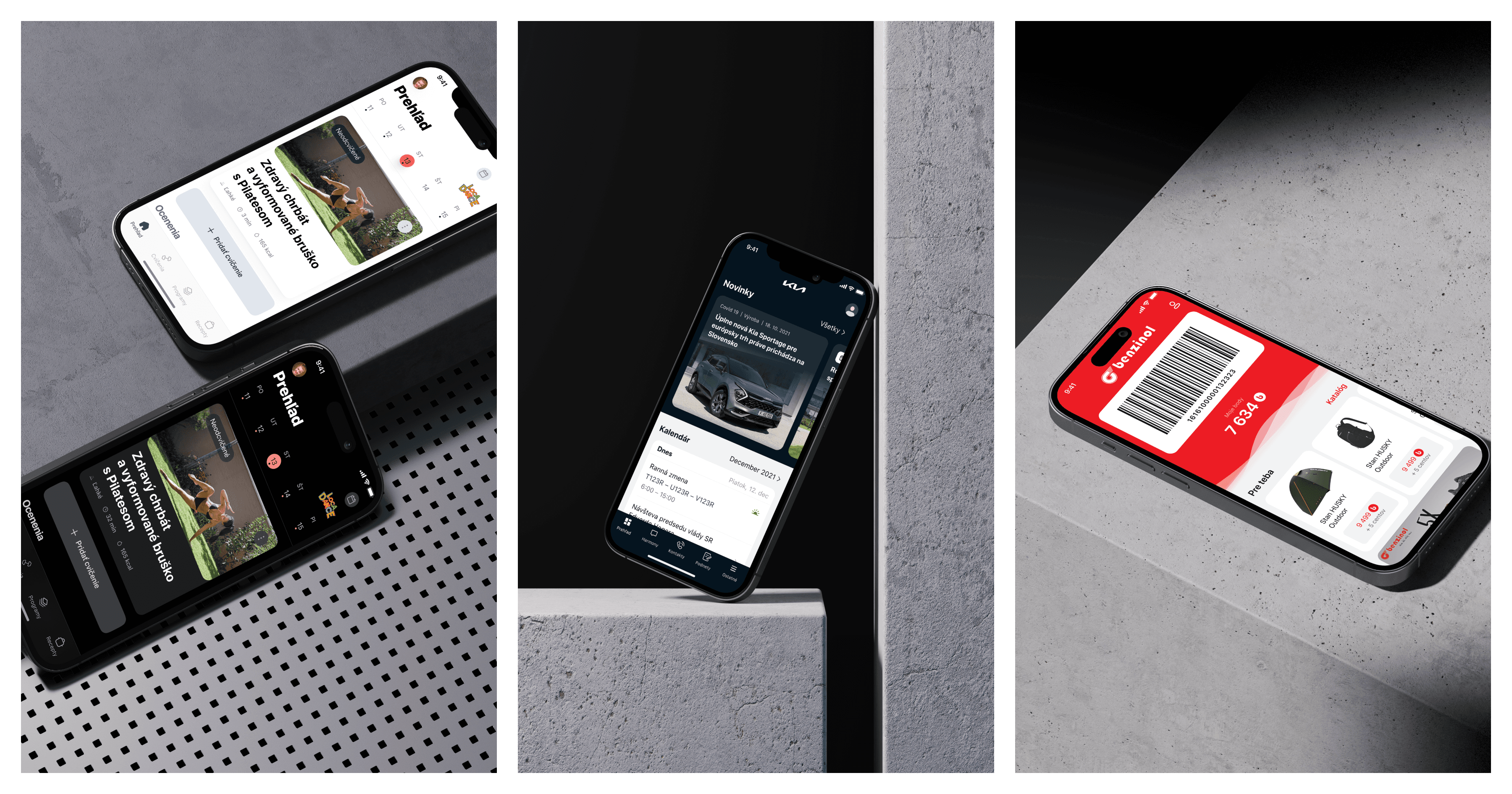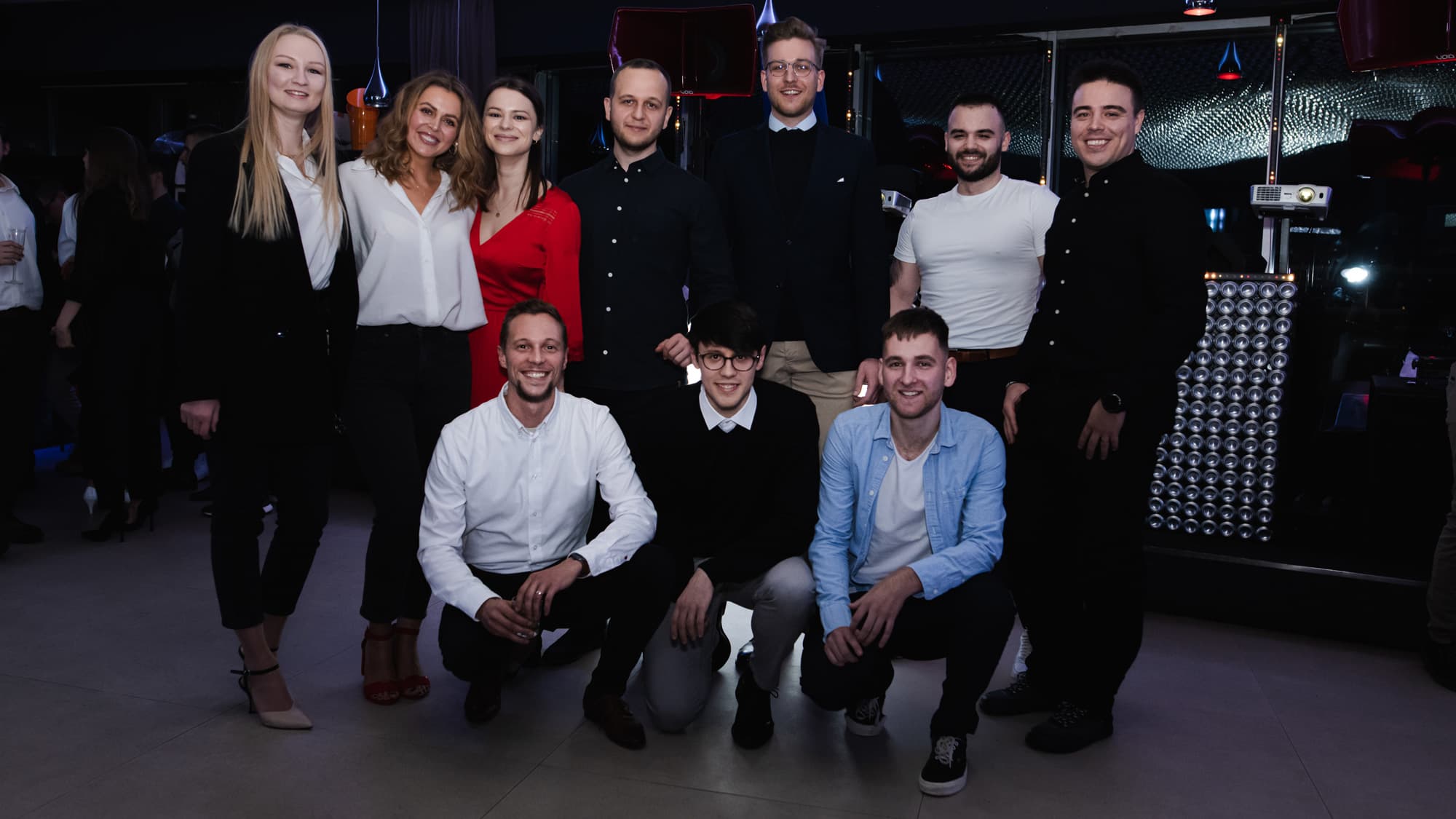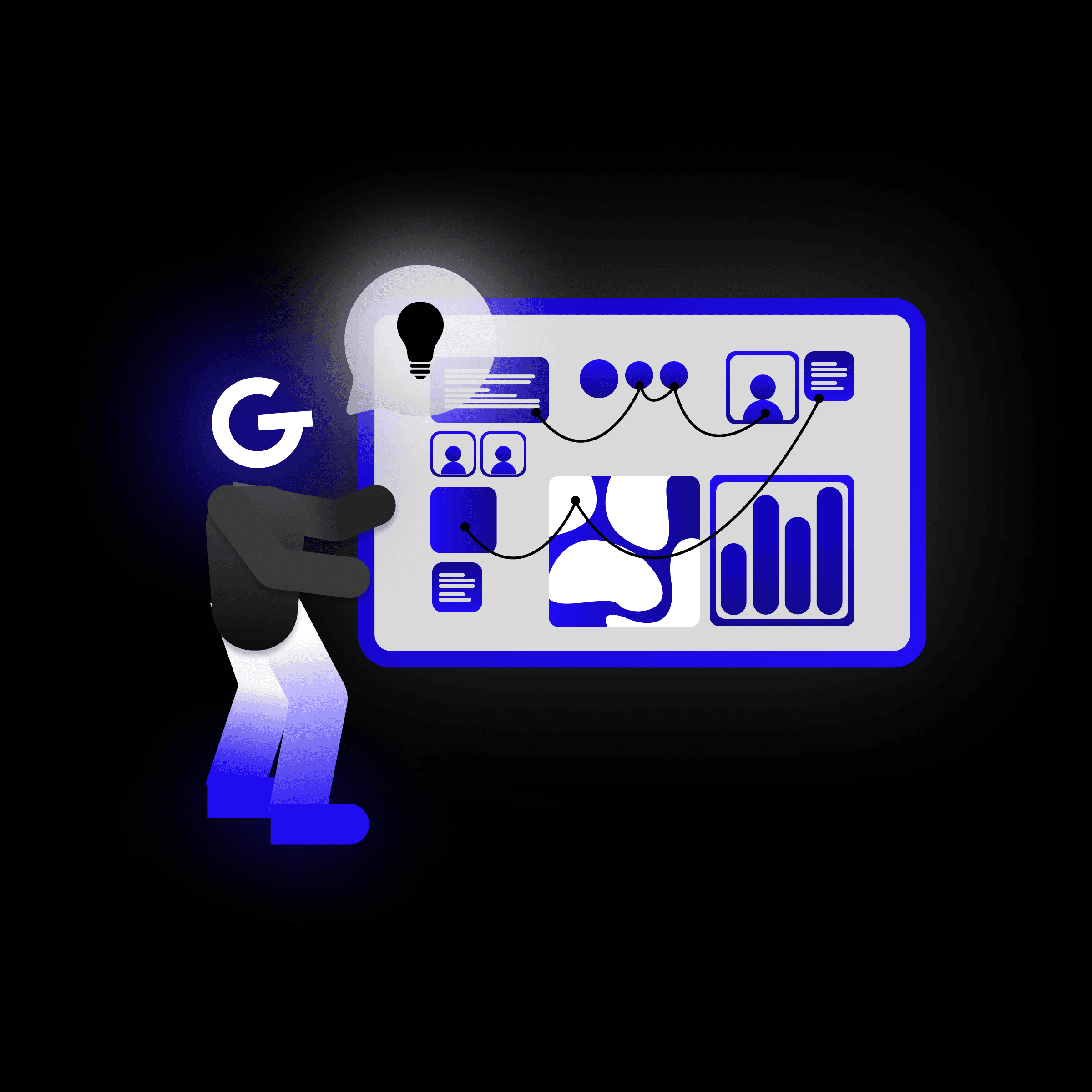
20. Apr 2023Insight
8 things I learned in 8 years as Head of Design
Leading a design team isn't easy, and leading people in general isn't for everyone. Just because you are strong in the craft doesn't mean you will be a good leader. For the last 8 years I have had the privilege to lead one of the best digital design teams on the SK/CZ scene. I have learned a lot and I would like to share with you a few thoughts that have stuck with me. I hope you find something useful in this article.


The most important tool in a design team is feedback 🧰
We all know that. But it's not about the process; it's about the mindset of the people. Everyone needs to understand that feedback is a tool for their development. It allows them to grow. If you want to get the most out of your team, it needs to have a good feedback culture – people need to feel comfortable being "exposed", there must be no rivalry or dissing, just a genuine desire to help.
💡 This cannot be taught. Honestly, I don't even know how we got to this point in the team. Of course, we are still working on it. But I think a team of the right people makes the right team :) People attract people with a similar mindset. And the decisions… It's about small decisions – what you do or don't do to defend a safe environment. That's the key.
It only takes one person to make others feel oppressed and afraid to speak their mind. This massively disrupts the culture of the entire team. Culture needs to be cultivated and defended. A team is only as strong as its weakest link. If someone says or does something against the team values, they should feel that it is not right. I haven't always upheld this, but I've learned my lesson.

Patience is the most important skill of a leader 🧘
Yes, you've surely already read 58 articles that started with "The most important manager skills". But this skill is really the most important one in my opinion. Leading people is actually caring for other people. And that's always difficult. People are different: some learn fast, some learn slower, some are emotional, some are lazy, some are more passionate about the work, some consider it a 9-to-5. And you have to understand them all and find your way to them. It takes a lot of patience.
- The patience to not redo people's work when it's not perfect or to your liking.
- The patience to not let a person sit on the bench if they failed on a project.
- The patience not to lose motivation if someone learns more slowly.
- The patience to delegate tasks and not expect them to be done exactly as you would do them yourself.
💡 Leading people is not for everyone. The most senior person is not necessarily the best leader and vice versa. Managing people is not managing their work.
The leader and seniors must have time to be bored 🥱
It is important for the progress of the team that the leader has enough space for "boredom". Only the necessary happens in the operative and peaking periods. The best ideas are born when people have time to ask "What else can we do better? Where can I help the company the most?" That's when the axes get sharp :)
The same is true for seniors. Most companies try to keep seniors as busy as possible, have them working on the best projects. Then they become cash cows. Or, rather, workhorses :) We used to do that too.
💡 But at some point, we figured out at GoodRequest that we wanted the seniors to get bored. Because when a senior is bored, innovations are created, processes are improved, others are educated. That's why a good ratio of seniors to mediors to juniors is important. Mediors and seniors also learn by teaching others. At the same time, we learned that the best way to get a quality person is to nurture them.

Don't go too deep or you'll drown 🏊♂️
The leader must maintain a sufficiently zoomed-out view. People don't see things in the context that a leader should because they are locked in a daily rhythm. But ask people what they are dealing with, what would help them, how they are doing… People can tell you their feelings, what they are going through and what they need. But they don't have the team context – what the others, the whole team and the company need. That's what you're there for as a lead. Collect the insights, but you make the decisions.
💡 The role of a leader is to bring a long-term view – Is it scalable? How will it work if there are 20 of us, not 5? How does this fit into the overall strategy? Is it really important for the client as well? How will this affect specific business indicators? If we do it this way now, what will it affect in the future?

Quantity is a prerequisite for quality 💯
The first draft is never good enough. With every iteration that doesn't work comes another example of how it shouldn't be done. That's the finding – Insight. This gradually improves the quality of the final design, while new perspectives are awakened and creativity increases again. With every constraint we encounter comes an opportunity. Everything nice and of good quality takes time.
This is also true in the case of people. Learned processes or drawn pixels don't make seniors either. It's those hard situations of dealing with a difficult client or challenge in a project where seniors are formed. You can't skip that time away from comfort.
💡 In an agency, every project has its limitations. Design is a question of balance between value and effort. It's the art of balancing between the amount of effort we can afford to invest and its focus in order to get as close as possible to the set expectations.

Processes are King but people are Queen 👑
This year we managed to reduce the design team's reworks on projects in development to 0. We have been trying to do this for 7 years. When I thought about how we did it, there was no process change behind it. Only quality people and time. Quality people are the most important elements of our team. There's no substitute. Even with fancy processes, you're only doing damage control.
💡 First and foremost, it's about the people and the team, and only then about processes. Therefore, invest all your energy in recruiting and retaining such people. Make sure they grow, are not afraid to make mistakes, but learn from them, are motivated and feel valued. But don't push it. The most common feedback I've gotten in 8 years has been that they're happy to have the space and that I don't pressure them.
At the same time, leave room for weaker periods, because work-life balance does not exist. The same person goes to work and home. If something hits you at work, it will carry over home and vice versa. It is impossible to have consistent performance throughout the year. Therefore, it is important to have an understanding and monitor the overall long-term benefits. People will appreciate it.

Designers are different from other people in the company 🤔
Different doesn't mean superior, rather, they look at things differently, they require a different way of assigning tasks, a different way of leading, and a different context to the project unless you want to kill their motivation and not get the most out of them.
💡 They ask a lot, they question things a lot… Give them space to express their opinion. They like to point out things that don't work. They're like kids when it comes to this – they have a lot of energy that needs to be channeled in the right direction – into fixing problems :)
When assigning tasks, you need to be clear in communicating expectations, but not too specific. Ask openly and you will find out even what you weren't looking for. It promotes critical thinking, and specific tasks kill it. Be clear about what you expect from them and what they expect from you. Everyone is unique, everyone may have different needs and requires a different approach. Last but not least, you also have to go to the right person with the right task.
The way the team is managed and the direction of the team can change 🎯
Especially depending on the people, but also the role of the design team within the company. From a more concrete, managerial, process-oriented and descriptive style to a looser, mentoring style. Something different suited each team and the state the company and team were in.
During my leadership I have seen 4 generations of design teams, each had different dynamics and required a bit different management approach. It always depended on the composition of the team, the seniority of the people and their expectations of me.
However, the team's goals and direction also depend on what the company needs from the design team at its stage. For example:
- Design as support for dev → churn out designs one by one so that developers have something to code, because that's how the company has built the plan.
- Design as a product driver → drive the right client decisions on product direction because there is a lack of product people.
- Design on a company-wide level → preach the principles of design thinking to the entire company because the company and teams need it.
💡 It is important to understand the role the design team plays within the company. Communicate this with stakeholders. I've been lucky that the company has never limited me in expanding the design team. That's one of the reasons why I've enjoyed my 8 years at GoodRequest and still do :)
And what next?






